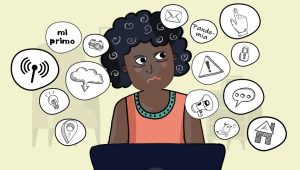In the heart of Silicon Valley, a startup unveils a revolutionary generative AI tool capable of designing cutting-edge electronic components in minutes—a task that once took human engineers weeks to complete. This scenario captures the enormous potential of generative artificial intelligence and mirrors many real-world breakthroughs. These technologies promise to reinvent creativity, productivity, and efficiency across sectors as we approach the beginning of a new age. However, the growing gap in economic inequality is a smouldering worry that lies under the surface of this technological sensation. Although generative AI portends a bright future, it also raises a very real question: Who stands to gain from these technologies? In other words, are we all moving forward together, or are some being left behind? Spoiler alert: It will be the latter one.
Generative AI (GenAI) refers to the subset of artificial intelligence technologies capable of generating new content, from text and images to music and beyond. It’s like giving a computer a canvas, not just to replicate but to create, to innovate. The heart of generative AI lies in algorithms known as neural networks, which learn from vast datasets to produce original outputs that can mimic human-like creativity.
This technology is poised to drive significant growth across various sectors, bolstering productivity and fostering innovation. Tools like DALL-E 3 can provide inspiration for artists, designers, and content creators. Text generators like ChatGPT can be integrated into customer service applications to provide automated help improving efficiency. GenAI has also been demonstrated to be helpful in healthcare applications, even being able to pass medical examinations without specific training. These advances hold an exciting promise for economic growth and prosperity.
The downside
This striking progress comes with a condition: it requires an internet connection. Considering that one-third of the global population remains offline, several socio-economic concerns arise. The disparity in internet access across different regions of the world means that the benefits of GenAI are not universally attainable. It gives companies and even individuals the ability to develop quickly, produce new goods, and penetrate markets at a rate never seen before. As a result, the economy is growing more quickly than it would have through conventional means and doing so in a way that is getting harder and harder for the offline world to compete.
Those with access to the internet can still struggle to use the best tools available since cutting-edge tools require a subscription. The subscription costs for these tools can be high, forcing individuals to settle for less sophisticated options or forgo the use of GenAI altogether. As an example, you need to pay $20 per month to get full access to ChatGPT, which would mean a significant investment for many.
Not only people with limited access will be disadvantaged, but also people unable to adapt to this technological revolution will be left behind. Low-paid workers are fourteen times more likely to need to change occupations, and usually, these low-paid workers are the ones with fewer resources to adapt. Adaptation will mean learning how to use GenAI-related tools, acquiring new relevant skills (for example prompt engineering), or simply paying for these newly developed tools. Without substantial investment in retraining and education, many individuals may find themselves unable to transition to these new roles, exacerbating unemployment.
The way GenAI is developed and implemented plays a decisive role in how these low-paid jobs are affected. In order to reduce unemployment and help the workers during this transition, these newly developed tools should be designed to augment workers’ capabilities and make them more efficient, rather than trying to just automate their current tasks, as suggested in this article. This will not only help mitigate the harmful effects of the fast adoption of GenAI systems on the economic gap but also will foster a more sustainable and human-centred transition.
Opponents argue that generative AI tools, by simplifying complex tasks like coding, design, and data analysis, democratise access to these skills. While that is true to an extent, the democratisation of skills facilitated by generative AI tends to benefit those who are already within the upper and middle classes, and who have the necessary infrastructure, education, and digital literacy to leverage these tools effectively. However, this trend simultaneously risks widening the gap between the lower and middle classes for several reasons, described before.
Can governments help?
Governments have the potential to help mitigate these harmful effects of GenAI establishing clear regulations and guidelines for an ethical development and deployment of AI systems. This will mean that the big tech companies that are developing these technologies would have to slow down technological progress in order to address the mentioned ethical and societal concerns. Regulations on the companies using GenAI tools should also be implemented, making sure they make efforts to work on a mindful, human-centred transition. Regulating AI is tricky because governments depend on big tech companies for their domestic economy. If some countries introduce tough rules, it might lead to different AI rules around the world. This can make it hard for countries to work together and for companies to compete globally, leading to regional disparities in AI governance and technological capabilities.
Food for thought
In the words of M. Kranzberg, “Technology is neither good nor bad; nor is it neutral”: The progress in GenAI holds the potential for both negative and positive impacts (or both) on the economy and society. While our perspective tends towards a more negative outlook, there are proactive measures that can be taken to address this imbalance.
First of all, governments can think of giving aid to people with less money so they can benefit from (and pay for) GenAI tools. Moreover, special economic help for the people who lost their jobs due to GenAI displacement can be a measure to limit economic inequality. Besides, we need to educate on relevant skills for the integration of GenAI tools in education and the workplace. Lastly, it would help if we emphasise the need to develop GenAI systems that augment workers’ skills rather than automate workers’ tasks.
To conclude, although GenAI holds great promise, it will ultimately increase economic inequality. This is because of limited access to technology, digital literacy, and economic displacement. By doing nothing, it will widen the gap between the lower and middle class. To navigate these challenges, a multi-faceted approach is essential. This includes investing in digital literacy and infrastructure, implementing equitable access policies, and fostering an inclusive environment where the benefits of generative AI are accessible to all, regardless of socio-economic status. In the end, the true measure of our development won’t be the technological marvels we pull off, but rather how well we use these innovations to improve society and make sure that nobody gets left behind in the transition to a digitally empowered future.


